How to cite this page Comment citer cette page
Items
In item set
People
-
Behnes, William British sculptor active in the nineteenth century. Some of his notable colonial works include a memorial to William Praed in Tyringham Church in Buckinghamshire, a memorial to Joseph Marryat in St George's Church, Grenada, and the statues of Henry Havelock in London and Sunderland.
-
Belain d'Esnambuc, Pierre French colonial trader who led France's early attempts to colonise the Caribbean and introduce slavery into the region. Belain d'Esnambuc established the first permanent French colony, Saint-Pierre, in Martinique in 1635.
-
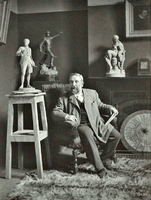 Bell Birch, Charles English sculptor in the nineteenth century.
Bell Birch, Charles English sculptor in the nineteenth century. -
Bell, John British sculptor in the nineteenth century. Bell produced a number of sculptures representing enslaved women during his career, including A Daughter of Eve - A Scene on the Shore of the Atlantic (1853), The Octoroon (1868), and Manacled Slave / On the Sea Shore (1877). Although Bell presented his abolitionist sympathies in these sculptures, his works have also been critiqued for commodifying the Black female body through allusions to the notion of illicit sexuality.
-
 Belloc, Jean-Baptiste French sculptor in the nineteenth and early twentieth centuries. Some of his notable colonial works include the Monument to the Glory of French Colonial Expansion in Paris and a statue of Louis de Lamoricière, which was originally installed in Constantine, Algeria but was later repatriated to France and re-erected in Saint-Philbert-de-Grand-Lieu.
Belloc, Jean-Baptiste French sculptor in the nineteenth and early twentieth centuries. Some of his notable colonial works include the Monument to the Glory of French Colonial Expansion in Paris and a statue of Louis de Lamoricière, which was originally installed in Constantine, Algeria but was later repatriated to France and re-erected in Saint-Philbert-de-Grand-Lieu. -
Bělský, František Czech sculptor in the twentieth century.
-
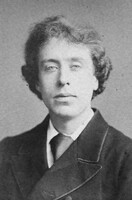 Belt, Richard Claude British sculptor in the nineteenth and twentieth centuries.
Belt, Richard Claude British sculptor in the nineteenth and twentieth centuries. -
Benson, George Elliott British colonial soldier who fought in Africa in the late nineteenth century. He died in October 1901 during the Second Boer War.
-
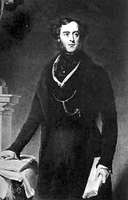 Bentinck, George British politician in the nineteenth century. The Bentinck family had a number of ties to the British Empire. George Bentinck's uncle, Lord William Bentinck (1774–1839), served as Governor of Madras, Governor-General of the Presidency of Fort William, and Governor-General in India during the first half of the nineteenth century. Lord William Bentinck also made an unsuccessful claim for slavery compensation as a trustee. George Bentinck's great-great-grandfather, Henry Bentinck, 1st Duke of Portland (1682-1726) had been a slave-owner and colonial administrator in Jamaica, where he served as Governor-General from 1721 to 1726.
Bentinck, George British politician in the nineteenth century. The Bentinck family had a number of ties to the British Empire. George Bentinck's uncle, Lord William Bentinck (1774–1839), served as Governor of Madras, Governor-General of the Presidency of Fort William, and Governor-General in India during the first half of the nineteenth century. Lord William Bentinck also made an unsuccessful claim for slavery compensation as a trustee. George Bentinck's great-great-grandfather, Henry Bentinck, 1st Duke of Portland (1682-1726) had been a slave-owner and colonial administrator in Jamaica, where he served as Governor-General from 1721 to 1726. -
Bernès-Cambos, François French colonial soldier who died during the Rif War in Morocco in 1925.
-
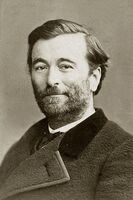 Bert, Paul Trained as a physician and a physiologist, he divided his time between his research on respiration and his political career. In 1872, he was elected as deputy by Auxerre. He became Minister of Public Instruction in the government of Léon Gambetta of whom he was a fervent supporter and drafted the laws establishing free, compulsory and secular education with Jules Ferry. He also wrote several school textbooks. He travelled to Algeria in the 1850s and was a member of the Paris Anthropology Society, whose racist theories he endorsed. In the wake of Gambetta’s policy of colonial expansion, he became the first civilian Governor General of Indochina, where he died.
Bert, Paul Trained as a physician and a physiologist, he divided his time between his research on respiration and his political career. In 1872, he was elected as deputy by Auxerre. He became Minister of Public Instruction in the government of Léon Gambetta of whom he was a fervent supporter and drafted the laws establishing free, compulsory and secular education with Jules Ferry. He also wrote several school textbooks. He travelled to Algeria in the 1850s and was a member of the Paris Anthropology Society, whose racist theories he endorsed. In the wake of Gambetta’s policy of colonial expansion, he became the first civilian Governor General of Indochina, where he died. -
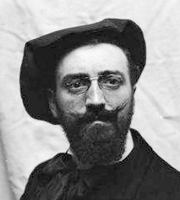 Bertrand-Boutée, René French sculptor active in the twentieth century.
Bertrand-Boutée, René French sculptor active in the twentieth century. -
Biaggi, Auguste French sculptor active in the twentieth century.
-
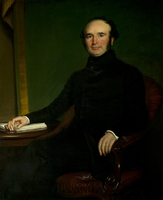 Biggs, John Hosier and political reformer in the nineteenth century. The firm John Biggs and Sons was one of the largest hosiery firms in early nineteenth century Leicester, and exported goods to North America and Australia.
Biggs, John Hosier and political reformer in the nineteenth century. The firm John Biggs and Sons was one of the largest hosiery firms in early nineteenth century Leicester, and exported goods to North America and Australia. -
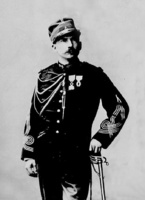 Binger, Louis-Gustave French colonial administrator, explorer, and military officer. Binger was the first Governor of Côte d'Ivoire (1893-1895) and Director of the French Ministry of Colonies (1898-1908).
Binger, Louis-Gustave French colonial administrator, explorer, and military officer. Binger was the first Governor of Côte d'Ivoire (1893-1895) and Director of the French Ministry of Colonies (1898-1908). -
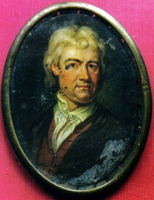 Bird, Francis English sculptor in the seventeenth and eighteenth centuries.
Bird, Francis English sculptor in the seventeenth and eighteenth centuries. -
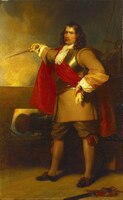 Blake, Robert Naval officer and military commander of the Commonwealth of England in the seventeenth century.
Blake, Robert Naval officer and military commander of the Commonwealth of England in the seventeenth century. -
Blandan, Pierre Hippolyte French colonial soldier who fought and died in Algeria in the nineteenth century.
-
Bobillot, Jules French soldier who fought and died in the Sino-French war (1884-1885).
-
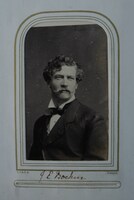 Boehm, Joseph Edgar Austrian-born British sculptor in the nineteenth century. Some of his notable colonial works include the statue of King Edward VII in Mumbai, two statues of Robert Napier, one of which is in London and the other in Barrackpore, and two statues of John Lawrence, one of which is in London and the other in Derry-Londonderry (having been repatriated from Lahore).
Boehm, Joseph Edgar Austrian-born British sculptor in the nineteenth century. Some of his notable colonial works include the statue of King Edward VII in Mumbai, two statues of Robert Napier, one of which is in London and the other in Barrackpore, and two statues of John Lawrence, one of which is in London and the other in Derry-Londonderry (having been repatriated from Lahore). -
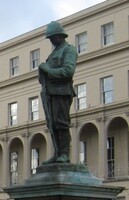 Boer War soldier
Boer War soldier -
Boissière, Jules French colonial writer, journalist, soldier and diplomat in Vietnam in the late nineteenth century.
-
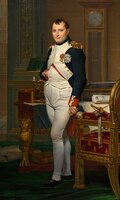 Bonaparte, Napoléon Born in Corsica into a noble family, Napoleon was trained from 1779 to 1785 at the military schools of Brienne-le-Château and Paris. On graduating, he joined an artillery regiment. He took part in the Revolutionary Wars, achieving the rank of general, and led the Italian and Egyptian campaigns from 1896 onwards. On the strength of the popularity he had acquired during his military campaigns, he organized a coup d'état on 18 Brumaire (November 9, 1799), taking command of the armies and initiating the drafting of a new constitution that allowed him to concentrate power. For political expediency and in response to demands from influential colonists in his entourage, Napoleon re-established slavery in the French colonies with the law of May 20, 1802. In 1804, he was crowned Emperor of the French.
Bonaparte, Napoléon Born in Corsica into a noble family, Napoleon was trained from 1779 to 1785 at the military schools of Brienne-le-Château and Paris. On graduating, he joined an artillery regiment. He took part in the Revolutionary Wars, achieving the rank of general, and led the Italian and Egyptian campaigns from 1896 onwards. On the strength of the popularity he had acquired during his military campaigns, he organized a coup d'état on 18 Brumaire (November 9, 1799), taking command of the armies and initiating the drafting of a new constitution that allowed him to concentrate power. For political expediency and in response to demands from influential colonists in his entourage, Napoleon re-established slavery in the French colonies with the law of May 20, 1802. In 1804, he was crowned Emperor of the French. -
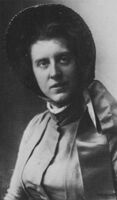 Booth, Catherine Co-founder of The Salvation Army
Booth, Catherine Co-founder of The Salvation Army -
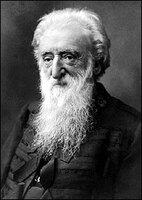 Booth, William Co-founder of The Salvation Army
Booth, William Co-founder of The Salvation Army -
Booz, Ludovic Haitian painter and sculptor in the twentieth and early twenty-first centuries.
-
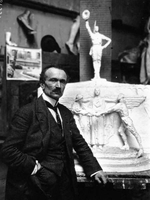 Boucher, Jean Trained at the Beaux-Arts in Rennes, then Paris, he made a name for himself with his monument to Ernest Renan in 1903. After serving as a volunteer from 1914 to 1918, he became a professor at the Beaux-Arts de Paris in 1919 and was elected to the Académie des Beaux Arts in 1936. He created the sculptures for the Verdun Victory and Soldiers' Monument. His "Poilu" statue for the town of Vitré (1921) established him as a major statuary of the 1920s.
Boucher, Jean Trained at the Beaux-Arts in Rennes, then Paris, he made a name for himself with his monument to Ernest Renan in 1903. After serving as a volunteer from 1914 to 1918, he became a professor at the Beaux-Arts de Paris in 1919 and was elected to the Académie des Beaux Arts in 1936. He created the sculptures for the Verdun Victory and Soldiers' Monument. His "Poilu" statue for the town of Vitré (1921) established him as a major statuary of the 1920s. -
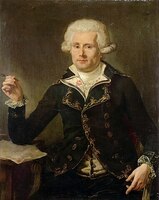 Bougainville, Louis Antoine French naval officer and writer. From 1766 to 1769, Bougainville made a circumnavigation of the globe, which he later recounted in Voyage au Tour du Monde (1771).
Bougainville, Louis Antoine French naval officer and writer. From 1766 to 1769, Bougainville made a circumnavigation of the globe, which he later recounted in Voyage au Tour du Monde (1771). -
Boulton, Richard Lockwood British sculptor in the nineteenth and early twentieth centuries. Boulton founded the firm Messrs R. L. Boulton & Sons, which carried out a number of sculptural works both locally in Cheltenham and overseas. Boulton works include the Boer War Memorial in Cheltenham, the Cheltenham College Chapel reredos (also a memorial to the Boer War, accompanied by several carved colonial figures), and sculptures for Royal Alfred Sailors' Home (now Maharashtra Police Headquarters) in Mumbai.
-
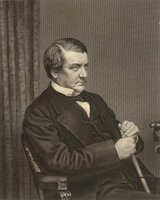 Bourke, Richard, 6th Earl of Mayo Chief Secretary for Ireland (1852, 1858–9, 1866–8) and 4th Viceroy and Governor-General of India (1869-1872)
Bourke, Richard, 6th Earl of Mayo Chief Secretary for Ireland (1852, 1858–9, 1866–8) and 4th Viceroy and Governor-General of India (1869-1872) -
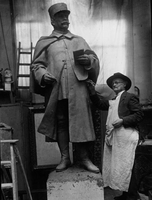 Boutry, Edgar French sculptor in the nineteenth and twentieth centuries.
Boutry, Edgar French sculptor in the nineteenth and twentieth centuries. -
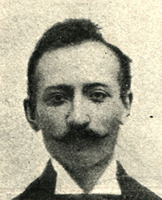 Boverie, Eugène-Jean French sculptor in the nineteenth and early twentieth centuries.
Boverie, Eugène-Jean French sculptor in the nineteenth and early twentieth centuries. -
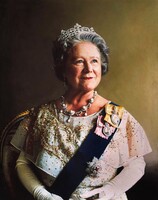 Bowes-Lyon, Elizabeth, The Queen Mother Queen of the United Kingdom and the Dominions of the British Commonwealth (1936-1952) and Empress consort of India (1936-1947)
Bowes-Lyon, Elizabeth, The Queen Mother Queen of the United Kingdom and the Dominions of the British Commonwealth (1936-1952) and Empress consort of India (1936-1947) -
Boyer, Nelson Sculptor from Réunion
-
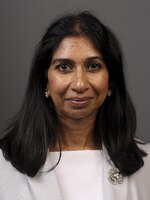 Braverman, Suella Attorney General for England and Wales (February 2020-March 2021; September 2021-September 2022)
Braverman, Suella Attorney General for England and Wales (February 2020-March 2021; September 2021-September 2022) -
Brétignère, Amédée French colonial explorer, geologist and planter in Côte d'Ivoire in the nineteenth century.
-
Bridgeman, Robert British sculptor in the nineteenth and early twentieth centuries.
-
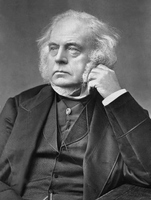 Bright, John British Radical and Liberal statesman in the nineteenth century.
Bright, John British Radical and Liberal statesman in the nineteenth century. -
Brilliant, Fredda Polish sculptor and actress in the twentieth century.
-
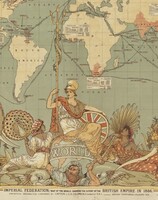 Britannia National personification of Britain, who appears as a helmeted female warrior holding a trident and shield
Britannia National personification of Britain, who appears as a helmeted female warrior holding a trident and shield -
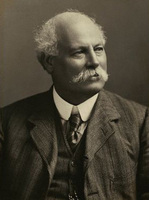 Brock, Thomas English sculptor in the nineteenth and early twentieth centuries. Some of his notable colonial works include the statue of Victoria in the Victoria Memorial Hall, Kolkata, the statue of Henry Bartle Frere in London, and the statue of John Nicholson, which was first installed in Dehli but was later repatriated and re-erected in Dungannon, Northern Ireland.
Brock, Thomas English sculptor in the nineteenth and early twentieth centuries. Some of his notable colonial works include the statue of Victoria in the Victoria Memorial Hall, Kolkata, the statue of Henry Bartle Frere in London, and the statue of John Nicholson, which was first installed in Dehli but was later repatriated and re-erected in Dungannon, Northern Ireland. -
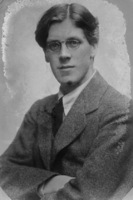 Brockway, Fenner British socialist politician, humanist and campaigner for a wide number of causes, including pacifism, nuclear disarmament, anti-imperialism, and racial justice. After the Second World War, Brockway established the Congress of Peoples Against Imperialism and was a member of the Movement for Colonial Freedom in the United Kingdom. Brockway was a leading figure in protesting the British government's conduct during the Mau Mau rebellion in Kenya (1952-1960).
Brockway, Fenner British socialist politician, humanist and campaigner for a wide number of causes, including pacifism, nuclear disarmament, anti-imperialism, and racial justice. After the Second World War, Brockway established the Congress of Peoples Against Imperialism and was a member of the Movement for Colonial Freedom in the United Kingdom. Brockway was a leading figure in protesting the British government's conduct during the Mau Mau rebellion in Kenya (1952-1960). -
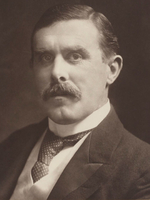 Brodrick, St John, 1st Earl of Midleton British Secretary of State for War (1900-1903) and Secretary of State for India (1903-1905).
Brodrick, St John, 1st Earl of Midleton British Secretary of State for War (1900-1903) and Secretary of State for India (1903-1905). -
Brosset, Diego French military officer who served in the two world wars, as well as in North Africa during the interwar period.
-
Brothers, Wills English sculptors in the nineteenth century
-
Brown, William Kellock Scottish sculptor in the nineteenth and twentieth centuries.
-
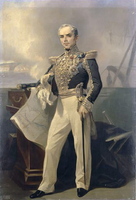 Bruat, Armand Joseph French naval officer and colonial administrator. Bruat served as Governor of the Marquesas Islands, Governor of French Oceania, and Governor of the Antilles in the nineteenth century.
Bruat, Armand Joseph French naval officer and colonial administrator. Bruat served as Governor of the Marquesas Islands, Governor of French Oceania, and Governor of the Antilles in the nineteenth century. -
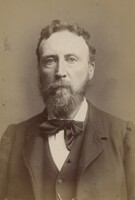 Bruce-Joy, Albert Irish sculptor working in England in the nineteenth and twentieth centuries.
Bruce-Joy, Albert Irish sculptor working in England in the nineteenth and twentieth centuries. -
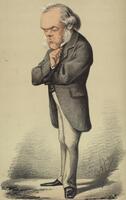 Bruce, Henry Austin British politician in the nineteenth century. Bruce was a leading figure in the National African Company and its successor the Royal Niger Company from 1882 to 1895, as well as the founder of what is now Cardiff University.
Bruce, Henry Austin British politician in the nineteenth century. Bruce was a leading figure in the National African Company and its successor the Royal Niger Company from 1882 to 1895, as well as the founder of what is now Cardiff University. -
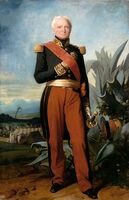 Bugeaud, Thomas Robert, marquis de la Piconnerie French military officer and colonial administrator. Bugeaud was Governor-General of Algeria from 1840 to 1847, where he led the colonial conquest with extreme brutality and violence against the civilian population.
Bugeaud, Thomas Robert, marquis de la Piconnerie French military officer and colonial administrator. Bugeaud was Governor-General of Algeria from 1840 to 1847, where he led the colonial conquest with extreme brutality and violence against the civilian population.